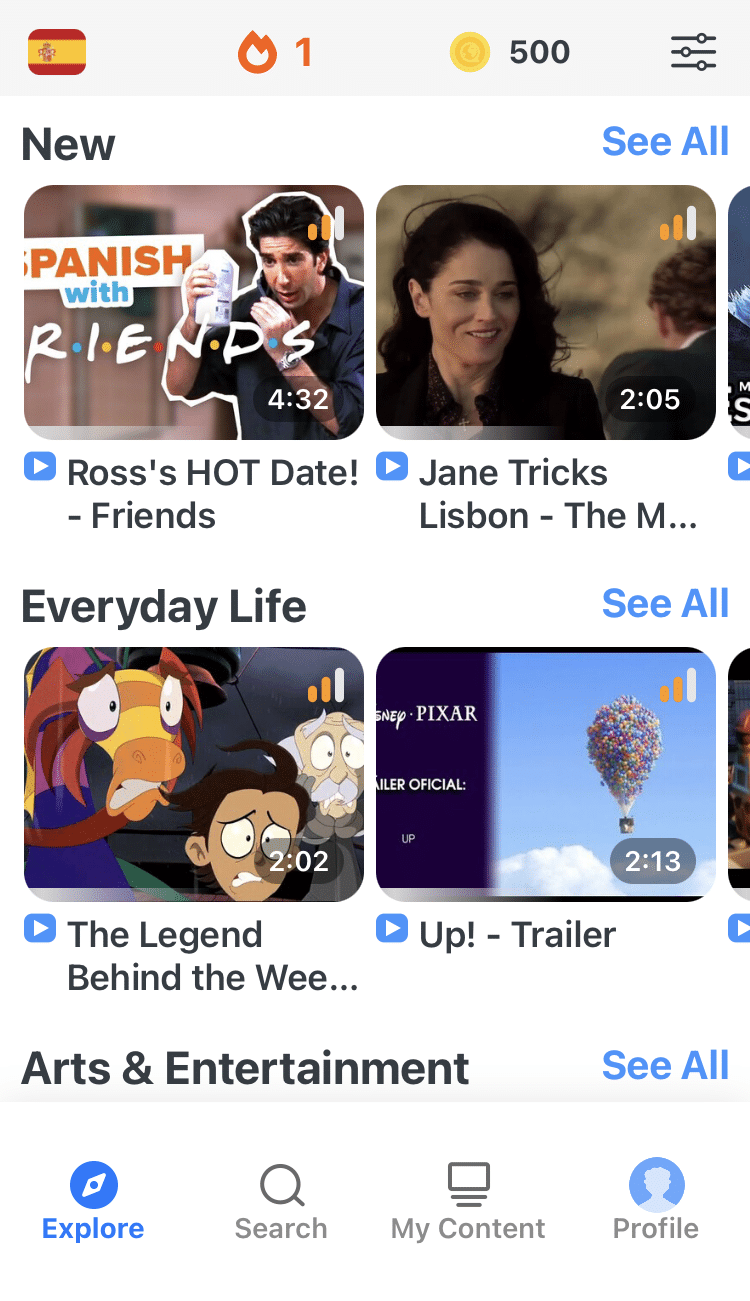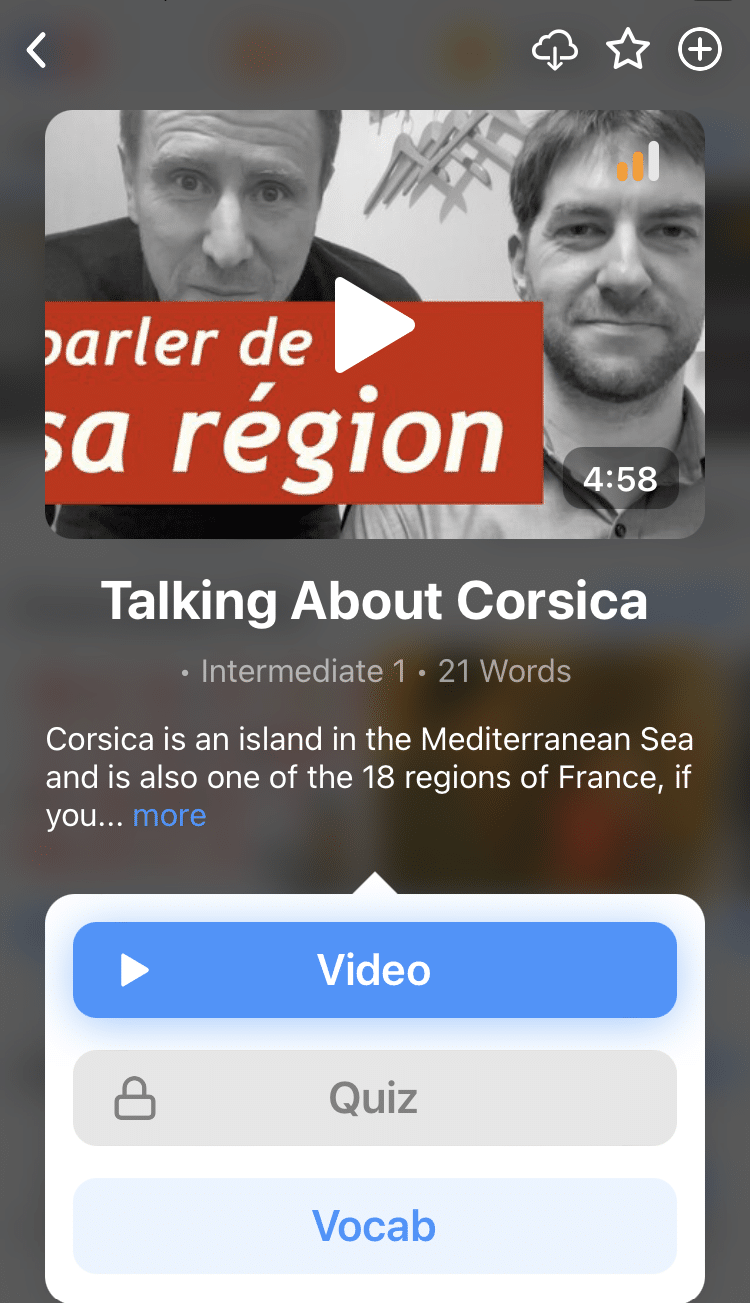
A Language Teacher’s 6 Favorite Tips for Becoming Bilingual
Wondering how people become bilingual or want to become bilingual yourself?
Did you know that most people who are fluent in both languages become bilingual by learning a second language?
If you want to do the same, there are a few basic strategies you can use to take the heavy memorization burden out of your language learning.
In this post, I’m sharing 6 proven tips that helped me to speak two languages fluently—read on and you’ll become bilingual too!
Contents
Download: This blog post is available as a convenient and portable PDF that you can take anywhere. Click here to get a copy. (Download)
How Do People Become Bilingual?
People can become bilingual either by acquiring two languages at the same time in childhood or if you learn a second language sometime after already speaking your first language. It’s important to note that becoming bilingual doesn’t necessarily mean that you have to be fluent in both languages. According to French linguist Ranka Bijeljac-Babić, a working definition of bilingualism would correspond to the regular and alternating use of at least two languages by an individual.
So, even if you only have a partial command of the second language, you can still consider yourself bilingual. The most common way people become bilingual is by learning a second language. When it comes to learning a second language, there are many different approaches you can take.
Some people prefer to take classes or join a course, while others prefer to learn on their own by reading, watching movies, or listening to music in the target language. Finding a language buddy can also be a great way to practice speaking and listening skills.
If you’re serious about becoming bilingual, let’s go over my go-to strategies that helped me to become fluent in two languages!
Best Strategies for Becoming Bilingual
1. Start with Learning the 100 Most Common Words
One of the more overwhelming aspects of trying to become bilingual for the first time is just how many different things you have to deal with when learning a language.
Between syntax, vocabulary, pronunciation, spelling and listening comprehension, it can feel like you’re actually trying to learn many languages at once rather than just one.
Having to memorize tons of new material and worry about all these other aspects of language learning means that things can get out of hand pretty quick.
There’s a better way to become bilingual.
Instead of trying to memorize a boatload of vocab and learn a language at the same time, just get the memorization out of the way first, and then start learning the language.
I realize that might sound strange. This isn’t your grandma’s language learning strategy. But it works.
It works because to be in good shape to learn a language, really good shape, you only need to memorize 100 words.
Every day, your process should look something like this:
- After you get up in the morning (or as early in the day as possible if your morning routine consists of rolling out of bed, looking around wildly, seeing what time it is and making a mad dash for the subway), find the word of the day on your list of common words, look up the pronunciation on Forvo or by Googling “[word] pronunciation,” write the word down on a piece of paper and put the paper in your pocket.
- For a nice added touch, you can also draw a picture associated with the word on the paper, because visual associations always make things easier to remember.
- Then, at least 10 times at intervals throughout the day, try to remember the word and say it to yourself. If you can’t remember it, no worries, just take the paper out of your pocket and look it up. Keep doing this until you go to bed.
When you wake up the next morning, try to remember yesterday’s word, look it up one more time if you can’t, then move on to your new word and start the daily process all over again.
Maybe it doesn’t seem like having 100 words under your belt would make a big difference on your path to becoming bilingual, but just stop and think about it for a minute—in English, the 100 most common words account for about 50% of all written language.
The idea behind the method is to take a couple of months to familiarize yourself with the 100 most important words in the language you’re learning, so that when you start actually working on becoming bilingual—most of the words you’re seeing aren’t showing up out of thin air and asking to be immediately memorized.
2. Spend 15 mins a Day Working on Your Pronunciation
You can’t memorize what you can’t pronounce, so the first stage of language learning is all about learning the sounds of your new language.
Try to spend a minimum of 15 minutes a day on this. Look up a pronunciation guide for the language you’re learning (try Googling “[language] alphabet pronunciation” or “[language] pronunciation guide,” replacing “[language]” with the language you’re becoming bilingual in—here’s the kind of thing to look for) and spend 10 of those 15 minutes going through it.
Unless the language you’re learning is extremely obscure, you should be able to find a free pronunciation guide with audio.
For the other five minutes of your pronunciation work, you want to listen to any excerpt of the language you can get your hands on. An easy way to do this is to get an audiobook in the language you’re studying and listen to a different excerpt from it every day. Movies are also good for this, as is foreign language radio.
FluentU takes authentic videos—like music videos, movie trailers, news and inspiring talks—and turns them into personalized language learning lessons.
You can try FluentU for free for 2 weeks. Check out the website or download the iOS app or Android app.
P.S. Click here to take advantage of our current sale! (Expires at the end of this month.)
Once you’ve picked your listening material, just listen for five minutes uninterrupted.
You won’t understand anything you’re hearing, so here’s how you should be listening: Pay attention to the inflections of the speaker’s voice and try to count how many sentences you hear total over the course of the five minutes. If you lose track, just keep counting and try to get as close as possible.
This exercise might seem a little pointless, but there’s a scientific reason behind it: Research (for example, this study and this one) has found that this kind of listening is an efficient way to learn the sounds of a language. It will help you start to make sense of how those sounds fit together and what syllables are most common in the language—but only if you’re paying attention to the material you’re listening to.
Counting sentences keeps your focus on the sounds you’re hearing.
All the better if you can put in more than 15 minutes a day going through your pronunciation guide and doing some attentive listening, but even if you can’t, you’ll find you’ve gotten a basic feel for how the language sounds.
3. Set Weekly Language Learning Goals
When you’re working on becoming bilingual for the first time, the sheer volume of stuff you have to learn can be overwhelming. On the bad days, you might feel lost in the middle of an ocean of words and grammatical structures with no land in sight.
The best way to avoid this feeling is to set concrete weekly language learning goals so you can measure your progress and have something to work towards every week. These goals can include memorizing a list of vocab words, getting down a certain grammatical construction or even just working through a text.
Slow and steady is always better than fast and erratic in learning a language, so set goals you’re pretty sure you can reach in a week. Try to push yourself, for sure, but it’s okay to sometimes err on the side of setting less ambitious goals you know you can reach rather than lofty goals that end in frustration. You’ll be surprised how quickly modest steps add up.
If you hit points of frustration in your journey to becoming bilingual, the antidote is just to set specific goals and not worry about anything else. The secret to learning any language is to learn to value improvement.
When you find yourself thinking, “Wow, my reading comprehension sucks and it’s not getting any better,” just say, “Okay, I’m going to read this article and take however much time I need to understand it.”
When you find yourself thinking, “I’ve been doing this for months and there’s still so many words I don’t understand!” say, “Whatever, I’m going to just get down this list of 15 vocab words this week.”
Learning a language is a pretty massive task, so sometimes the best way not to let it get to you is to simply focus on meeting concrete, short-term goals on a regular schedule and let the rest fall into place by itself.
4. Practice Your Vocab with the Four-line Dialogue Technique
You can take a lot of the stress out of vocab learning by thinking of it not as an exercise in memorization but as a process of integrating new words into your lexicon that you’re actually going to use to communicate.
An easy way to move from mere memorization to learning for the sake of communication is by ending every vocabulary study session with an ad-libbed, four-line dialogue that uses one or more of the words you’re learning.
The idea is simple: Create a four-line dialogue between two imaginary people in real time, two lines for each person. But write one person’s lines and speak the other person’s lines. Make sure to use the vocab word(s) you’re working on at least once in the dialogue. So if you’re trying to memorize the word “life,” your dialogue might look like this:
Person 1 (written): Hello.
Person 2 (spoken): Hello. How are you?
Person 1 (written): I’m doing well. How are you?
Person 2 (spoken): My life is a disaster.
This exercise is a winner because it accomplishes so many things at once—it helps you learn vocabulary by using it in context, it makes you more fluent at producing the language in real time and it integrates your speaking and writing.
Of course, you can do several of these dialogues at a time, and there’s no reason you have to limit yourself to four lines if you’re feeling creative. I just like four lines because it doesn’t take very much time and I’m impatient.
5. Sing Songs in the Language You’re Learning
Music is like steroids for your memory, only without all the bad health effects. Think of any song you know the lyrics to and then ask yourself, would you have memorized all those words without the accompanying music?
Just by picking a song you like, listening to it repeatedly and memorizing it, you can learn a wealth of new words. Even better, because music tends to be structured in a way that brings out the grammatical patterns behind the lyrics, learning songs is a great technique for internalizing grammatical constructions in the language you’re becoming bilingual in.
To get the most mileage out of this technique, you really should memorize the songs, or at least excerpts from them. Your process could look something like this:
- Pick a song you want to memorize in the language you’re learning. An easy way to find songs is just to Google “best [language] songs.” Can’t go wrong with the best.
- Find a copy of the lyrics online by Googling “[song name] lyrics” in your target language.
- Choose an excerpt from the song you want to focus on, then go through it with a dictionary to make sure you understand everything the song is saying.
- Listen to the song, following along with the lyrics. Repeat until you get to the point where you can understand in real time what the song is saying—first with the written lyrics, then without.
- Listen to the song a few more times. You can do this passively while you’re doing some mundane task like you would with any other music. The idea is just to get it in your head.
- Try singing the first line of the song from memory. If you can’t remember it, play the first line of the song, then sing it back.
- Once you get the first line, do the second line. Then put them together. Repeat with larger chunks of music until you can sing the entire excerpt.
You’ll find that by the time you get to the last step, the first step where you make an effort at memorization, you already have a lot of the song stuck in your head just from going over the lyrics in detail and listening so much.
This exercise is a fun way to add new words to your vocabulary and plant new grammatical structures firmly in your mind. It’ll also give you some cultural literacy to go with your new language skills.
6. Do One-sentence Summaries
When you’re working on becoming bilingual, it can be easy to put in an intense language learning session, then go about the rest of your life totally forgetting about everything language-related once you finish studying.
You could theoretically learn a language this way, but you’ll find your language studying goes much more smoothly if you occasionally remind yourself what you’ve been working on over the course of your day.
In particular, your memorization will go better if you take a minute every now and then to put your brain back in language learning mode and keep everything fresh in your mind.
One way to do this without taking much time is to do one-sentence summaries. Of what? Of anything and everything.
Just had a good sandwich for lunch? Describe it in a single spoken or written sentence, using vocab you’ve learned in the language you’re becoming bilingual in, or looking up new words as necessary.
Just watched an interesting movie? Do the same thing.
Just finished a meeting? Do a one-sentence summary.
Read a news article? One-sentence summary.
By using the language at regular intervals throughout your day, even if only for a single sentence, you’ll get everything you’re studying to stick in your mind better.
Learning the 100 most common words, using music as a memory aid, setting concrete goals you know you can meet and regularly using new words in context with four-line dialogues and one-sentence summaries will take a huge burden off your memory and let you pick up a new language!
The whole point of language is to make it possible for people to express anything they could ever want to express.
Make these tricks part of your language learning routine, though, and you’ll remember everything except why you ever doubted your ability to become bilingual!
Download: This blog post is available as a convenient and portable PDF that you can take anywhere. Click here to get a copy. (Download)
And One More Thing...
If you dig the idea of learning on your own time from the comfort of your smart device with real-life authentic language content, you'll love using FluentU.
With FluentU, you'll learn real languages—as they're spoken by native speakers. FluentU has a wide variety of videos as you can see here:
FluentU has interactive captions that let you tap on any word to see an image, definition, audio and useful examples. Now native language content is within reach with interactive transcripts.
Didn't catch something? Go back and listen again. Missed a word? Hover your mouse over the subtitles to instantly view definitions.
You can learn all the vocabulary in any video with FluentU's "learn mode." Swipe left or right to see more examples for the word you’re learning.
And FluentU always keeps track of vocabulary that you’re learning. It gives you extra practice with difficult words—and reminds you when it’s time to review what you’ve learned. You get a truly personalized experience.
Start using the FluentU website on your computer or tablet or, better yet, download the FluentU app from the iTunes or Google Play store. Click here to take advantage of our current sale! (Expires at the end of this month.)






